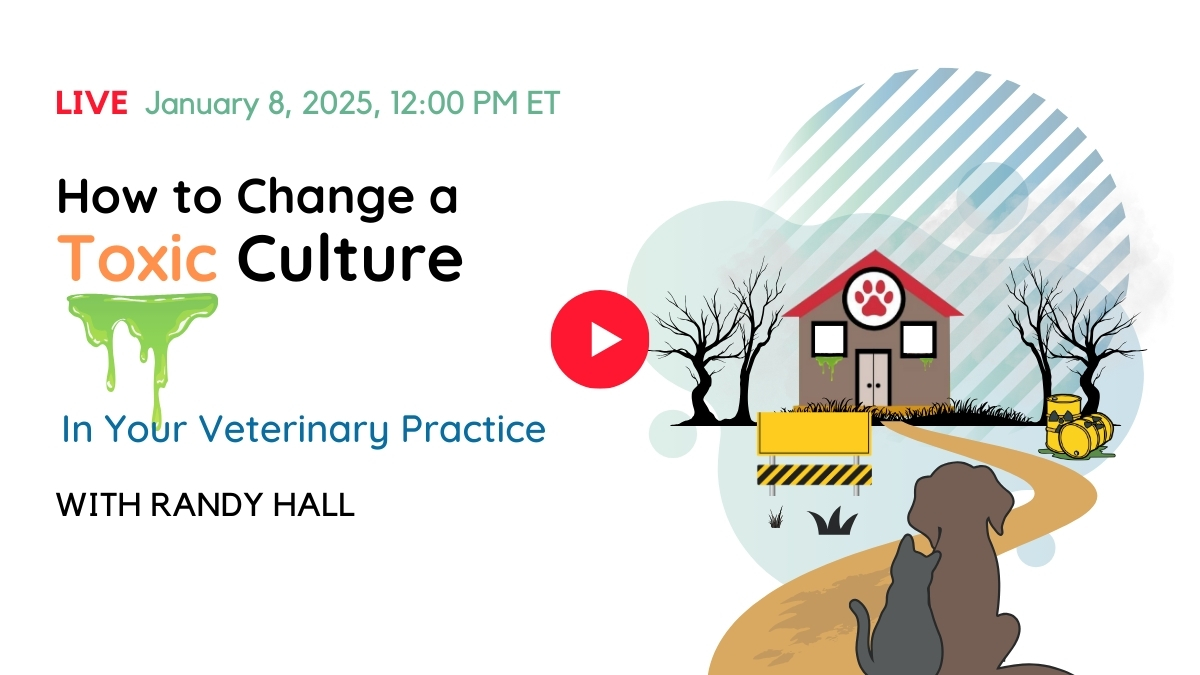Quick Highlights
- How Culture Forms: Explore how culture develops by default or intentional design and why it matters.
- Behaviors Matter: See how daily actions shape your practice's success.
- Practical Steps: Learn how to define, build, and sustain a positive culture
In a veterinary practice, culture isn’t just a buzzword—it’s the invisible force that shapes how your team collaborates, communicates, and cares for clients and patients. But what exactly is culture, and how does it form?
Let’s dive into the essence of culture, exploring how it evolves naturally or is intentionally crafted. By understanding its formation, you can lead your practice toward a thriving, cohesive environment that reflects your vision and goals.
What is Culture in a Veterinary Practice?
Culture is more than just a feel-good concept. It’s the personality of your practice, shaped by unwritten rules, shared values, and—most importantly—observable behaviors.
A Collection of Behaviors: Culture forms through the actions and interactions of your team. How people show up, communicate, and handle challenges collectively defines “how things are done around here.”
The Personality of the Practice: From teamwork and collaboration to conflict resolution, culture influences everything. It’s the emotional tone that clients and team members sense the moment they walk through the door.
Think of culture as the environment created by repeated actions. The good news? Those actions can be aligned intentionally to form a positive, productive workplace.
How Culture Forms: By Default or By Design
Understanding how culture forms is the first step toward shaping it intentionally. Culture develops in one of two ways: by default or by design. Which path are you taking in your practice?
1. Culture by Default
When culture forms by default, it’s unintentional and reactive. Everyone brings their habits, patterns, and attitudes to work. These behaviors—whether productive or not—become the foundation of “how things are done.”
For example:
- Break Room Disconnects: Team members retreat after challenging shifts without addressing tension or supporting one another.
- Gossip and Miscommunication: Negative habits like gossip erode trust, leading to poor collaboration and ineffective client care.
Without intervention, these behaviors become ingrained, creating a toxic environment that undermines teamwork and client service.
2. Culture by Design
Intentional culture starts with a clear vision of what you want your practice to be. Leaders and team members work together to define behaviors that align with this vision, then build habits to reinforce those behaviors daily.
For example:
- Defined Behaviors: A team decides to eliminate gossip and replace it with direct, constructive communication.
- Positive Onboarding: New hires are engaged from day one through feedback, collaboration, and mentorship, building trust and buy-in.
By actively choosing the behaviors that reflect your desired culture, you ensure alignment between values and actions.
The Role of Behaviors in Shaping Culture

To truly understand culture, we must look at the role behaviors play in shaping it. Repeated actions—whether intentional or not—become the foundation of your workplace environment.
Behaviors That Harm Culture
- Gossip: Talking about, rather than to, colleagues erodes trust.
- Avoidance: Failing to address interpersonal conflicts leads to communication breakdowns.
- Reactive Thinking: Blaming the past instead of focusing on solutions creates stagnation.
Behaviors That Strengthen Culture
- Accountability: Team members take ownership of challenges and focus on solutions.
- Collaboration: Regular huddles and check-ins ensure communication and alignment.
- Feedback: Constructive, direct conversations—both positive and negative—encourage growth and trust.
Changing behaviors takes time, but intentional habits create a culture where everyone feels valued, supported, and motivated.
Example: Culture by Design in Action
Let’s look at an example of culture by design in action. A veterinary hospital I’ve worked with intentionally crafted its onboarding process to reflect the culture they wanted to cultivate.
From day one, new hires were:
- Encouraged to share ideas and experiences.
- Asked for feedback on their training experience.
- Welcomed into a supportive, collaborative environment.
The result? A new team member said, “I’ve never worked anywhere like this. I feel valued and engaged from day one.”
This success didn’t happen by accident. The hospital deliberately chose onboarding behaviors that aligned with their vision for a supportive culture. Over time, these behaviors became habits, reinforcing their desired workplace environment.
Move toward a Better Culture in Your Veterinary Practice
This article is based on part of Randy's recent live event, How to Change a Toxic Culture in Your Veterinary Practice. Check out the recording here.
Creating a culture by design doesn’t happen overnight, but it starts with clear, intentional steps:
- Define Your Vision: Collaborate with your team to outline what kind of workplace you want to create.
- Identify Key Behaviors: Choose actions that align with your vision, such as open communication or proactive problem-solving.
- Build Habits: Practice these behaviors daily until they become second nature.
- Use Tools and Processes: Implement huddles, check-ins, and feedback loops to support these behaviors.
- Commit to Accountability: Regularly review and adjust to ensure alignment between actions and vision.
These steps take effort, but the payoff—a more engaged team, better patient care, and a thriving practice—is well worth it.
Your Role in Shaping Culture
Culture doesn’t form by accident. It’s the result of repeated actions, intentional choices, and committed leadership. As a leader, you have the power to steer your practice toward a positive, thriving environment.
Ready to lead your team toward a better culture? The Veterinary Leadership Program offers tools and strategies to help you create a cohesive, thriving practice. Learn more now.
